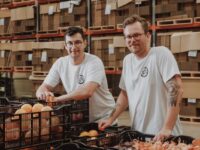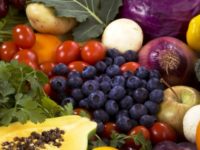 Occasionally, suppliers request advice on how to introduce a new product into retailers. One of the barriers they face is being added to the supplier list.
Occasionally, suppliers request advice on how to introduce a new product into retailers. One of the barriers they face is being added to the supplier list.
Supplier lists are useful and necessary, but they pose a danger. The advantages include keeping a tight rein on the number of suppliers so that the retailer does not dissipate their buying power over a plethora of suppliers.
This strengthens their negotiating position. The downside is that by limiting the number of suppliers, the retailer may miss out on something new.
As an example, let’s look at something as basic as milk. Some of us will remember the days when the milkman delivered a quart or two of milk in heavy reusable bottles.
They were sealed with a shiny aluminium cap. You used to press on this with your hand and move it left and right a few times and then remove it. Kids used to collect the caps and if really industrious, could sell them if they had the patience to wait a while. The milk had a layer of cream on the top. I recall skimming this off and making the best ice cream.
That was it. Milk was milk. Today there are so many varieties. Skim milk, semi-skim, light white, soy, rice, almond, full cream, organic, fat free, lactose free, rBST-free, A1, A2, fresh, concentrated, long life, raw, calcium enriched, homogenised, Jersey, Guernsey, sterilised, pasteurised, heat treated, UHT, buffalo, goat, sheep, camel, donkey, horse, reindeer, yak, oat – and I dare say a whole lot more. So far that is more than 30, and counting.
Imagine a new supplier pops up with a new variety. What does the poor supermarket milk buyer do? Take it on and add to the range? Take it on and drop the worst seller? Not take it on? Dropping the worst seller can have ramifications, as per the old Tesco story. They were going to drop feta cheese until they figured out that their top customers were the people buying it.
While on the milk run, yes, there is a new one! And it is good. It is 100 per cent Organic Whole Spelt Milk produced in Tuscany, Italy. And while imported, it is priced competitively and available from one of the large supermarket chains.
Spelt is not new in Australia, although the milk is. We have had a range of spelt pastas, grains, flour, cereals, and even beer around for years.
It was clearly a brave and adventurous buyer to buy yet another type of milk. And this is where the talent of buyers and their bosses comes into play. Now, if milk is a challenge, imagine the decisions required in purchasing new styles, fabrics, price points et al. Remember the miniskirt? Maybe not. It arrived in the early 60s and Mary Quant made it famous in 1964, calling it after her favourite car. It took the world by storm.
So if you are a talented buyer and you are prepared to give something new a go, good on you. You will often make mistakes, but when you hit a winner, this will more than make up for all the flops.
Stuart Bennie is a retail consultant at Impact Retailing (www.impactretailing.com.au) and can be contacted at stuart@impactretailing.com.au or 0414 631 702.















